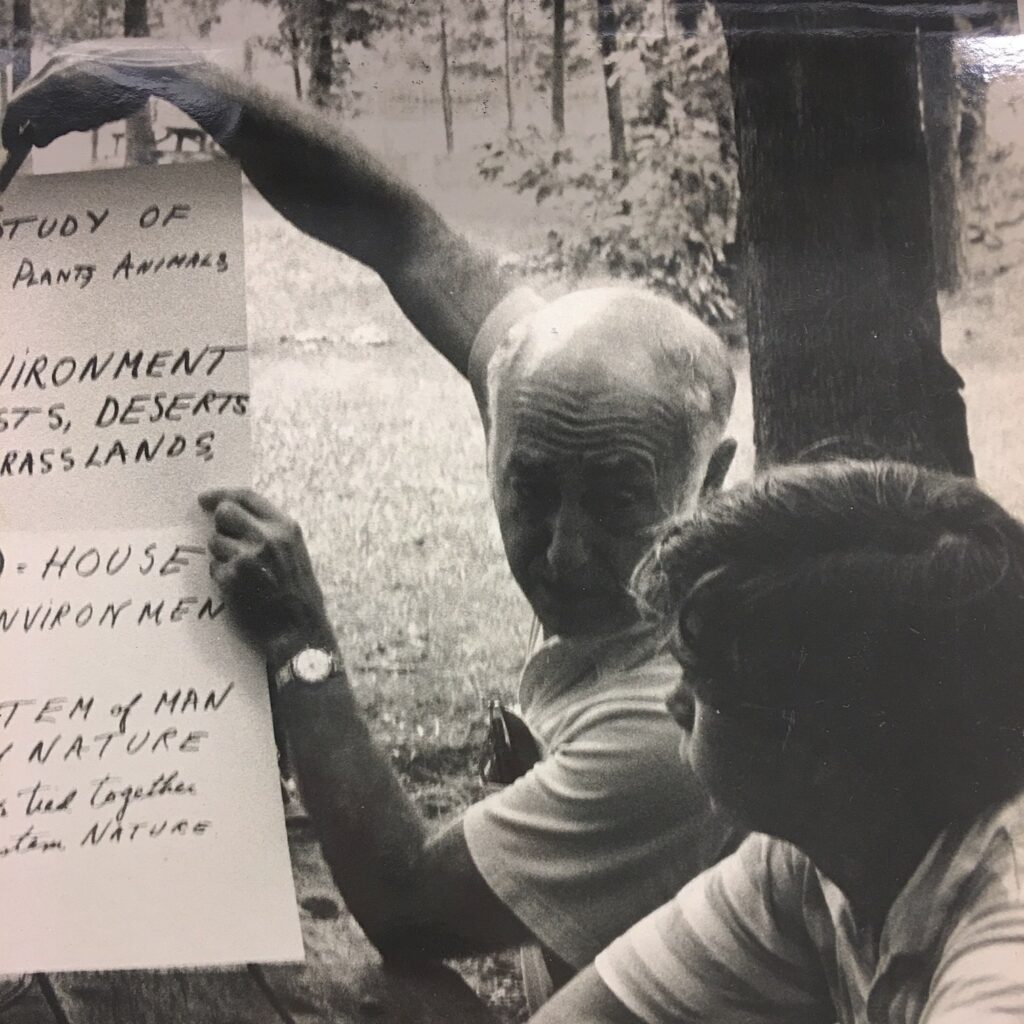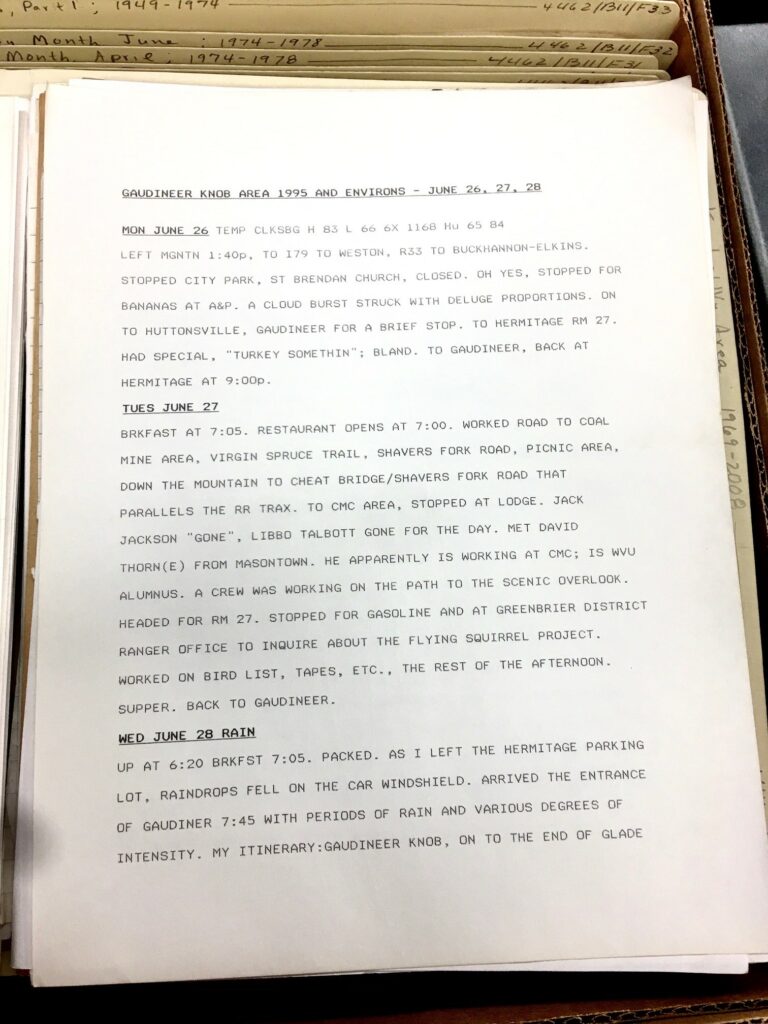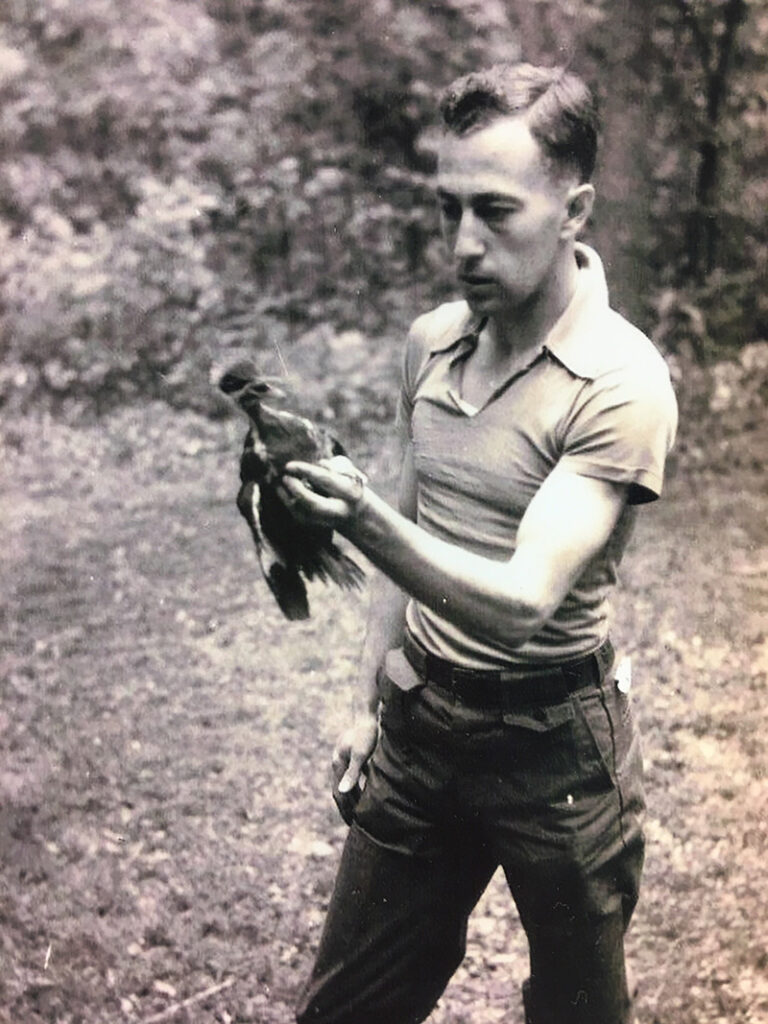Global and Local Bird Populations Recorded
Posted by Jane Metters LaBarbara.January 24th, 2020
Blog post by Linda Blake, University Librarian Emerita
George H. Breiding, 1917-2007, spread the news regarding the importance and impact of nature and its conservation. While a naturalist at Oglebay Park in Wheeling, 1950-1963, where he was born, he wrote a nature column for the Wheeling Intelligencer, did radio interviews, and taught youth about the natural world. He was an agent for WVU’s Extension Services, 1963-1979, and also wrote widely for various popular magazines including Wild Wonderful West Virginia and Bird Watcher’s Digest. As I said, he spread the word at every opportunity.

His lifelong passion, as reflected in his papers in the West Virginia and Regional History Center, was nature and particularly birds and particularly warblers, and particularly Swainson’s Warbler. All his adult life beginning in 1941 when he was stationed in Colorado in the Army, he maintained daily logs recording data on high and low temperatures, bird sightings, plants observed, and more. He traveled the world to better observe birds but his papers in the WVRHC document observations in Puerto Rico, Guatemala, and Costa Rica. Breiding’s collection also contains counts of birds he saw here locally in the WVU Core Arboretum, in the West Virginia Botanic Garden, at Coopers Rock, and on his property in the Range Run area of Monongalia County among other locations.

As I process Breiding’s papers, or really any collection, I think about why the material is valuable and why is my work important beyond the preservation of a person’s life work. Why is George Breiding’s extensive lists of birds important? Some years ago I remember being in a WVU classroom when someone spotted through the window a hawk flying over. The professor told us that he was so happy to see the hawk because it indicated that the Monongahela River had returned to health. Scientist see robust bird populations as an indicator of the condition of rivers, streams, and forests, in short the whole ecology of an area.

Bird populations are in dire trouble due to climate change and other factors such as destruction of bird habitats. A much-reported study in an October 19, 2019, article in Science indicates that the North American avifauna, birds of a given region, have suffered a 29% reduction since 1970. This is a loss of 3 billion birds across species and environments! Could Breiding’s bird recordings help scientists understand how the birds in our area and state have been affected? Could a compilation of his data indicate the return of birds if this threat to biodiversity and ecosystems is averted by conservation and legislative action?
Please visit us in Morgantown at the Downtown Campus Library to see George H. Breiding’s papers, A&M 4462, or selected West Virginia collections about birding in the West Virginia and Regional History Center:
A&M 0149, Earl A. Brooks Ornithological Notes, 1890-1915
A&M 3162, Maurice Brooks, Biology Professor, Papers, 1922-1973
A&M 3701, National Audubon Society, Mountaineer Chapter Records, 1970-2013





